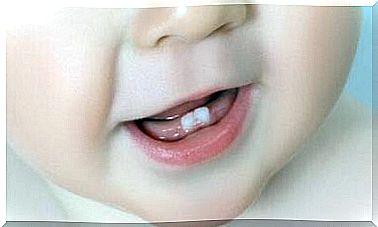Avoid Colic – We Will Show You 3 Ways

Nothing makes a mother despair like the crying of her child. This, in turn, is one of the most common symptoms of colic. It manifests itself in continuous wailing for no apparent reason. We give advice on how to avoid colic.
A big myth is that colic occurs primarily when feeding with mixed milk. It can also occur in babies who are breastfed, although cow’s milk certainly causes more gas than breast milk. We have tips for you on how to avoid colic .
In addition to the type of milk, a decisive factor in the development of cramps is that the baby drinks and swallows air in the process. It is often the case that this discomfort manifests itself at night and thus tears again on the mother’s nerves.
Pediatricians diagnose colic when an otherwise healthy and well-nourished baby cries for at least three hours a day, 3 out of 7 days and for at least 3 weeks at a time.
Colic is very common in babies
Statistics from pediatricians suggest that 30% of colic is caused by excessive air in the abdomen. Between 15% and 40% of all babies suffer from colic in the first 4 months of their life. After that, the occurrence suddenly disappears.
How a baby is fed is a crucial factor. This alone can prevent colic. The attitude of the mother but also that of the child is important. The positioning of the breast or the bottle also play a role. “It is ideal when the woman sits comfortably and calmly, and so does the baby,” says pediatrician Libia Segura.
Segura describes colic as inconsolable crying that gets worse in the afternoon. There are also symptoms such as a bloated stomach, bent legs, flushing of the skin and closed fists. These are all clear signs of colic.

Avoid colic – these are 3 techniques
Day-to-day care for a baby can be very stressful. For this reason, many parents want to put the baby to bed right after feeding and falling asleep. That is the first mistake.
Even if your baby falls asleep, it is very, very important that you help him or her still to burp. We have 3 possible techniques for you that will be very helpful.
Pat on the back
To make the baby burp, his / her stomach needs to be on your shoulder. Once you’ve put it over your shoulder, pat it gently on the back with a cupped hand to allow air to vent.
It is also good if your hand moves up while you are doing this. So it will be able to let the air out better and stay relaxed. Then the baby can fall asleep more easily when the burp is done.
Move your legs
If you then touch his stomach and feel that it is empty, hollow, or full of air, do the following: Place your baby on a flat surface, such as your bed, and move his legs. Alternately you stretch your legs and then push them back towards your stomach, about 10 times.
You can also move the legs alternately, as if it were riding a bicycle. Or you can move both legs in a clockwise direction.
These movements stimulate the internal organs and thus help to expel the gases that are produced when drinking milk. This then resembles the healthy exercise adults do after eating to aid digestion.

Abdominal massage
Abdominal massage also helps the baby to get rid of the gases that can cause colic by belching. You can use gentle upward or circular movements to stroke your baby’s tummy. It’s also actually proven that clockwise massage helps relieve colic.
Anti-colic medication
If none of these measures work, then medication could be useful.
It’s best to use something your pediatrician has prescribed for you. Usually this is given before feeding. The medication will then help expel air and prevent colic.
All of these techniques should be used on a regular basis. Then you will see effective results and help your child sleep better. And it allows you to tackle your daily chores with a smile.









